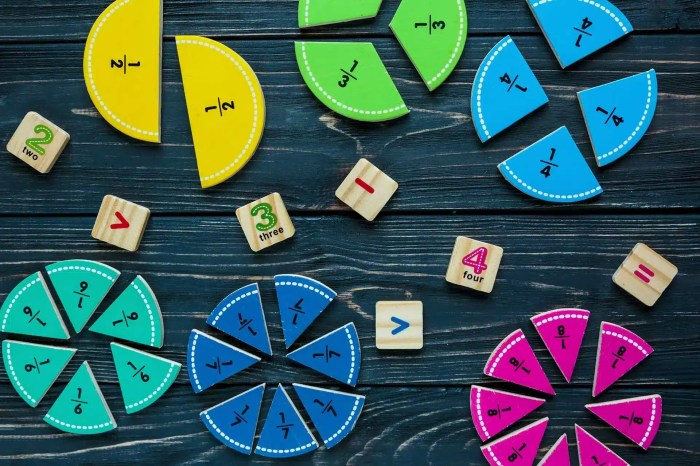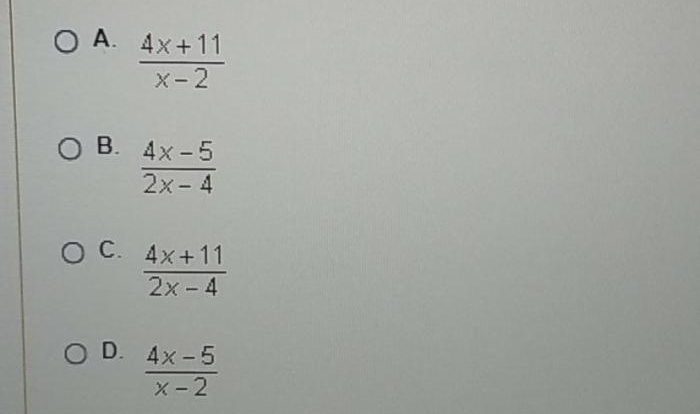What is 4.375 as a fraction? Dive into the world of fractions and decimals as we embark on a journey to convert this enigmatic number into its fractional counterpart. This comprehensive guide will provide a clear understanding of the process, ensuring you master the art of converting decimals to fractions with ease.
Throughout this exploration, we’ll delve into the concept of fraction conversion, unraveling the steps involved in transforming 4.375 from a decimal to a fraction. Moreover, we’ll uncover the significance of fraction simplification, showcasing how to reduce fractions to their simplest form.
Expressing 4.375 as a Fraction

To express a decimal as a fraction, we need to understand the concept of place value and the relationship between decimals and fractions.
A decimal is a number that represents a part of a whole, using a base-10 number system. The digits to the right of the decimal point represent fractions of a whole, with each place value representing a power of 10. For example, the first digit to the right of the decimal point represents tenths, the second digit represents hundredths, and so on.
Converting 4.375 to a Fraction, What is 4.375 as a fraction
To convert a decimal to a fraction, we can follow these steps:
- Write the decimal as a fraction with a denominator of 1, followed by as many zeros as there are decimal places.
- Simplify the fraction by dividing both the numerator and denominator by their greatest common factor (GCF).
For example, to convert 4.375 to a fraction:
- Write 4.375 as 4375/1000.
- Simplify the fraction by dividing both the numerator and denominator by 125, which is the GCF of 4375 and 1000. This gives us 35/8.
Therefore, 4.375 as a fraction is 35/8.
Simplifying the Fraction: What Is 4.375 As A Fraction

Simplifying fractions is essential in mathematics, as it allows us to work with fractions in their simplest form. A simplified fraction is one where the numerator and denominator have no common factors other than 1. This makes it easier to perform operations on fractions and to compare their values.To
simplify a fraction, we can use the following steps:
- Find the greatest common factor (GCF) of the numerator and denominator.
- Divide both the numerator and denominator by the GCF.
Finding the GCF
The GCF of two numbers is the largest number that divides both numbers without leaving a remainder. To find the GCF, we can use the prime factorization method.
Examples of Similar Conversions

To further understand the process of converting decimals to fractions, let’s explore some additional examples.
The decimal 4.375 can be expressed as a fraction by multiplying both the numerator and denominator by 1000, which gives us 4375/1000. The greatest common factor of 4375 and 1000 is 125, so we can simplify the fraction by dividing both the numerator and denominator by 125, which gives us 35/8. Incidentally, have you heard about nancy va a esas flores ? Getting back to our fraction, 35/8 is the simplest form of the fraction 4.375.
We will convert the decimals 0.75, 1.25, and 2.625 into fractions and simplify them to their lowest terms.
Decimal to Fraction Conversion Table
| Decimal | Fraction | Simplified Fraction |
|---|---|---|
| 0.75 | 75/100 | 3/4 |
| 1.25 | 125/100 | 5/4 |
| 2.625 | 2625/1000 | 105/40 |
Applications of Converting Decimals to Fractions

Converting decimals to fractions is not just a theoretical exercise; it has practical applications in various fields.
In cooking, for example, recipes often call for precise measurements of ingredients. Expressing measurements as fractions ensures accuracy and consistency. For instance, 1.5 cups of flour can be converted to the fraction 3/2 cups, which is easier to measure using standard measuring cups.
Engineering
In engineering, decimals are commonly used in calculations and measurements. However, certain applications, such as designing mechanical parts or architectural structures, require precise fractional dimensions. Converting decimals to fractions allows engineers to work with measurements that are more precise and compatible with standard tools and materials.
Mathematics
In mathematics, fractions are often used to represent repeating decimals. For example, the decimal 0.333… can be expressed as the fraction 1/3. This conversion simplifies calculations and makes it easier to understand the properties of repeating decimals.
Answers to Common Questions
How do I convert 4.375 to a fraction?
To convert 4.375 to a fraction, multiply it by 100 to make it a whole number (437.5). Then, express this number as a fraction with 100 as the denominator (437.5/100). Finally, simplify the fraction by dividing both the numerator and denominator by 5, resulting in 875/200. Further simplification can be achieved by dividing both numbers by 5 again, giving us the final fraction of 175/40.
Why is it important to simplify fractions?
Simplifying fractions makes them easier to work with and compare. By reducing a fraction to its simplest form, we can determine its true value and identify any common factors between the numerator and denominator.
Can I convert other decimals to fractions using the same method?
Yes, the same method can be applied to convert any decimal to a fraction. Simply multiply the decimal by a power of 10 to make it a whole number, express it as a fraction with the appropriate denominator, and simplify the fraction by dividing both the numerator and denominator by their greatest common factor.


